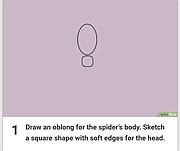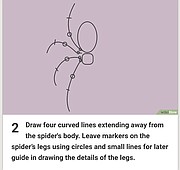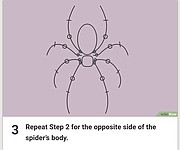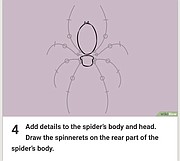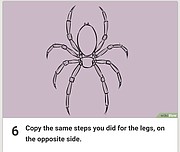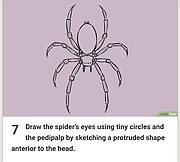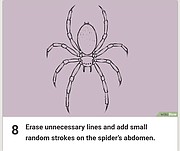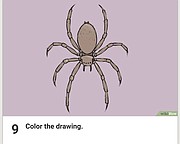CRITTERS OF NORTH IDAHO: Goldenrod crab spider
Christian Ryan Correspondent | Hagadone News Network | UPDATED 6 years, 7 months AGO
They say April showers bring May flowers, but as many insects will find out this spring, that’s not the only thing they will bring. Camouflaged and waiting to pounce on unsuspecting prey is one of the most well-hidden arachnids in the world.
The arachnid in question is the goldenrod crab spider (Misumena vatia), also called the flower spider. Crab spiders get their name from their superficial similarities to crabs. The goldenrod crab spider is the largest of the crab spiders, measuring 0.12-0.35 inches in length. They have a holarctic distribution, meaning they are found throughout the northern hemisphere.
Spiders are well-known for constructing webs. These webs are made of sticky strands of silk and trap insects that fly into it. Once stuck, the prey is paralyzed by the spider with a dose of venom and wraps its prey in a “mummy” of silk to consume later. The goldenrod crab spider doesn’t bother with constructing webs. Instead, it climbs onto the middle of an open flower and stretches its legs. Once there, it changes the color of its skin to match that of the flower. Usually these spiders appear yellow because goldenrod is one of their favorite flowers to perch on, hence their name.
Male goldenrod crab spiders are quite different from the females. Their legs are a darker color, usually black on the head and front legs and pale green on the back legs. They’re also quite a bit smaller, measuring 0.20 inches at most. They spend much of their time moving from flower to flower on the search for females with which to mate. Soon afterward, the female lays a sack of eggs underneath a leaf, where she guards them for the next three weeks. Once the babies, called spiderlings, hatch, she will die.
How does a spider change its color anyway? Well, the color of most living things, including humans, is based on pigment-producing cells in our skin. When a goldenrod crab spider wants to turn yellow, it produces a liquid form of the yellow pigment which it then secretes into the cells making up the outer layer of its body. Changing from white to yellow takes about 10 to 25 days. When it wants to turn white from yellow, the yellow pigment is sent into the cells in the lower layers of its skin so inner glands filled with white pigment are visible. This process takes just six days or so since no new pigment is being produced.
The spider waits patiently for an insect, most often a butterfly or a bee, to land on the flower. Then, when the time is right, the spider springs forward! It grabs the struggling insect, which is sometimes bigger than itself, with its long front legs before injecting a dose of venom. The venom’s effects are twofold, as they not only paralyze the insect, but they also breakdown the insect’s insides into a liquidized state so the spider can literally drink up the insect through its fangs like a straw.
This spring and summer, as the flowers start to bloom and show off all their brilliant colors, see if you can spot any goldenrod crab spiders waiting patiently for their next meal to arrive!
•••
Christian Ryan can be reached at [email protected]
HOMESCHOOL PROJECT
HOW TO DRAW A SPIDER
Here is a fun drawing project for you this week. You will be learning how to draw a spider.
MATERIALS:
Pencil
Drawing Paper
If you have been finding these projects helpful please let us know. We would love your feedback.
•••
Project provided by Angel Dominiq
ARTICLES BY CHRISTIAN RYAN CORRESPONDENT

Critters of North Idaho: American Coot
If you see this bird swimming across the water’s surface from a distance, chances are you will mistake it for a duck.

Critters of North Idaho: Northern pike
When we talk about human disturbance of the environment, we usually think of the overharvesting of trees, overhunting and littering. But we can also disrupt the natural balance by introducing species of animals and plants into non-native habitats. This is what happened in the case of the northern pike.

Critters of North Idaho: Ye ol' vole
If you see a little rodent scurrying about in the thicket or under the snow, you may think it’s a mouse. And it may be a mouse, but at first glance it is very difficult to tell a mouse apart from another little rodent, the vole. So difficult, in fact, that voles are often mistakenly referred to as “field mice.” What makes these little scurriers so different from each other? For starters, they belong to different families.












